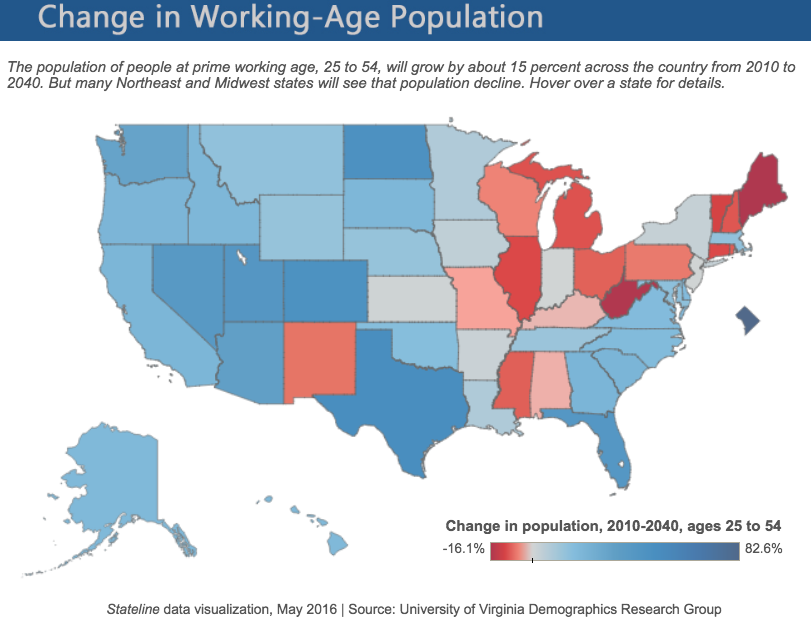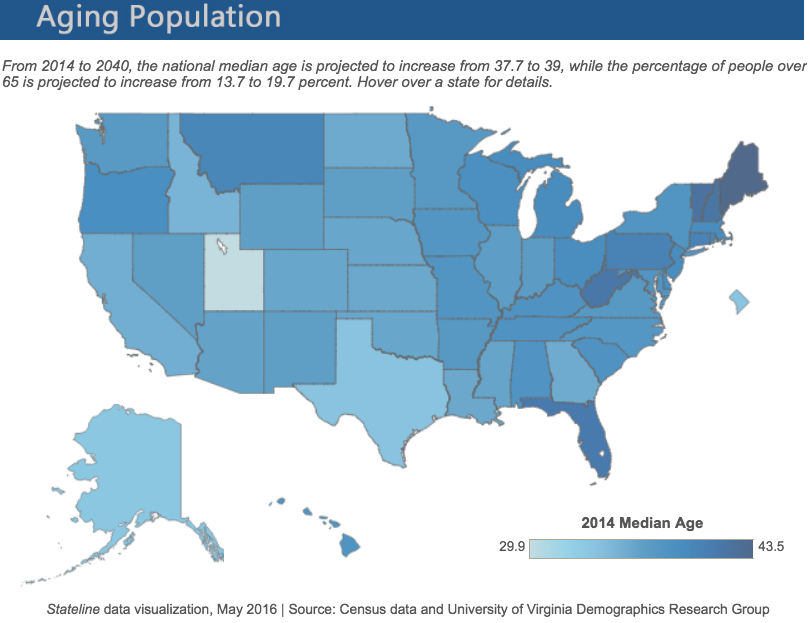New data shows how America’s population is changing, with urgent implications for education. There aren’t any surprises, but useful confirmation of trends some of us have been tracking very closely.
The main takeaway: the northeast and midwest are continuing to lose population, along with Appalachia and parts of the south.
In many parts of the Northeast and Midwest, population growth is slowing at an unprecedented rate as people are getting older, women are having fewer children, and more people are moving out than in — and that signals big economic trouble ahead.
If the projections hold true, 11 states — Connecticut, Illinois, Maine, Michigan, Mississippi, New Hampshire, Ohio, Pennsylvania, Rhode Island, Vermont and West Virginia — will see their population shrink from 2030 to 2040 after showing mostly modest gains from 2010 to 2030.
As I’ve been saying, this is an unprecedented development: “It would be the first decade in U.S. history that so many states see their population fall.”
On the flipside, parts of the south and west are growing:
Many of the fastest-growing states in the next 25 years will be in the Sun Belt, according to the newly released projections. The populations of Texas and Florida are expected to grow by more than 50 percent from 2010 to 2040, to 41 million and 28 million, respectively. Georgia will add 3 million and go from the ninth largest state in 2010 to the sixth largest in 2040, with 13 million people.
Intersecting with this trend is the overall population’s aging:
Americans are getting older and living longer. The population of people 65 and over in the U.S. will increase 72 percent from 2015 to 2040, to 82 million, while the overall population will increase by 18 percent, to 380 million, according to U.S. Census Bureau projections.
One of the ways these trends intersect is by internal migration:
Continued migration to the South, especially by young people ages 18 to 30, is contributing to the aging population in the North and East, said Ronald Lee, a demographer at the University of California at Berkeley.
Read the rest of the article for the economic implications.
For educational aspects, there are several. We could see those population-dropping states cut K-12 and higher ed spending, perversely. For example, “[t]o attract young workers and new companies, [Illinois] needs to loosen regulations and lower property taxes”. Alternatively, “[t]o be successful down the line, the state should be making large investments in education and training to improve quality of life and attract businesses, said Mark Price, a labor economist at the Keystone Research Center…”
Then there’s the disciplinary angle, with that ongoing emphasis on STEM:
To retain and attract young skilled workers, [Maine] Republican Gov. Paul LePage submitted measures this year targeted at student debt. One bill, which he signed in April, created a new Science, Technology, Engineering and Math loan program. Students in those fields who agree to live and work in Maine will pay no interest on their loans. Another bill expanded a tax credit for some students.
There’s also the problem of brain drain. In Pennsylvania,
The state also needs to retain the young people graduating from its universities, especially in cities such as Philadelphia and Pittsburgh, [Kathy Manderino, the state’s secretary of Labor and Industry] said.
Let’s see what else states do beyond emphasizing STEM programs.
Meanwhile, America’s educational center of gravity is shifting towards the Sun Belt.
(thanks to Steven Kaye)






